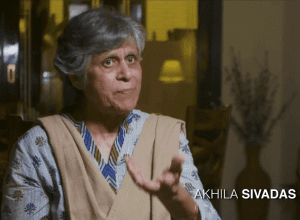
Shocker: 31 children died by suicide every day in India in 2020
The COVID-19 pandemic has indeed created havoc in the lives of children, as government data showed that 31 children on an average died by suicide every day in India in 2020. Experts are blaming this disturbing and worrying numbers on the COVID-19 pandemic, which probably heightened the psychological trauma faced by children.

The COVID-19 pandemic has indeed created havoc on the lives of children, as government data showed that 31 children on an average died by suicide every day in India in 2020. Experts are blaming this disturbing and worrying numbers on the COVID-19 pandemic, which probably heightened the psychological trauma faced by children.
The National Crime Records Bureau (NCRB) data revealed that 11,396 children had died by suicide in 2020, an 18 per cent rise from 9,613 such deaths in 2019 and 21 per cent rise from 9,413 in 2018, said media reports.
The primary reasons for suicides among children below 18 years ranged from ‘family problems’ (4,006) to ‘love affairs’ (1,337) and ‘illness’ (1,327). Other reasons being due to hero-worshipping, unemployment, bankruptcy, impotency or infertility and drug abuse.
Unfortunately, emotional well-being or psycho-social support often takes a back seat for us as a society and is completely ignored. This is what Prabhat Kumar, Deputy Director – Child Protection, Save the Children highlighted in his comment on the NCRB data. As a society, we are more focussed on tangibles such as education and physical health for building national human capital, he said.
But, undeniably, Kumar blamed COVID-19 and the closure of school and social isolation coupled with anxiety among elders for the problem. It further aggravated the issue of mental health and brought it to the forefront.
Also read: COVID care: ‘Be patient with children, understand their emotions’
However, the rising number of suicides among children reflects a “systemic failure,” he observed. He laid the onus of children’s mental health as a collective responsibility of parents, families, neighbourhoods, and government at large, who are failing to provide a conducive and nurturing ecosystem. There is no environment for children to realise their potential and fulfill their dreams for a bright future.
“Committing suicide, on the contrary, is an antithesis,” pointed out Kumar.
To further compound the problem there is the stigma attached to mental health. There is also an abysmally low number of per capita mental health professionals and all of this requires to be addressed urgently, he urged. “Save the Children calls for a collective action to nurture an encouraging and supportive ecosystem for children and youth,” he said.
Priti Mahara, Director, Policy Research and Advocacy at CRY-Child Rights and You too too voiced her concern about the recent NCRB data. This issue been one of their major concerns right from the start of the pandemic. They had been concerned about how the pandemic might impact children’s mental health and psycho-social well-being, and “now this data actually underscores the fear that the pandemic may have accentuated the psychological trauma faced by children”.
“As the NCRB data reveals, a total of 11,396 children (5,392 boys and 6,004 girls) have died by suicide in 2020, which accounts for 31 deaths per day or approximately 1 child committing suicide per hour,” she said.
There has been “tremendous” amount of emotional stress and trauma for children because they were confined to homes with lack of interaction with friends, teachers or any other person in the position of trust due to prolonged closure of schools, pointed out Mahara.
Many children may have had to deal with a hostile environment at home, many others may have experienced the death of their loved ones to COVID. While others may have faced fear of contagion and deepening financial crisis at the family level, she added.
Many children have also experienced huge uncertainty related to completion of curriculum, exams and results.
Also read: 14% young Indians feel depressed, only 41% seek help: UNICEF report
There was also the challenge of digital divide during the pandemic. A large number of children, especially the ones living under the shadows of multi-dimensional poverty, had to contend with their frustration in trying to attend online classes. On the other side of the spectrum, Mahara said that some children suffered from over-exposure to the Internet and social media exposing themselves to online bullying and allied cyber-crimes.
According to Mahara, all these factors combined with an overall anxiety of the uncertainty of the future, must have been too much to bear for their young and tender minds, she added.
 Akhila Sivadas, executive director, Centre For Advocacy and Research suggested that “alternative care and counselling models” have to be developed in tandem with key stakeholders. Every effort should be made to take the learnings to a cross-section of society so that everyone takes the responsibility to curb this practice, she stressed.
Akhila Sivadas, executive director, Centre For Advocacy and Research suggested that “alternative care and counselling models” have to be developed in tandem with key stakeholders. Every effort should be made to take the learnings to a cross-section of society so that everyone takes the responsibility to curb this practice, she stressed.
Parents must understand how fragile their children’s mental well-being is and be proactive in assessing it, said a mental health expert, Prakriti Poddar, Managing Trustee at Poddar Foundation.
She suggested that teachers too need to be roped in and trained to identify symptoms and patterns of mental issues. Besides, she said educational institutions must establish psychological counselling programmes to help students deal with their issues in confidentiality.
“Every child has a different coping mechanism. Therefore, the counselling programmes must be flexible, to cater to the needs of each child individually. If needed, a student must be referred to a mental healthcare professional for timely intervention,” advised Poddar.

